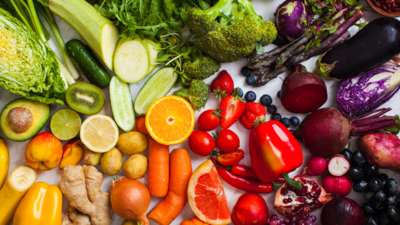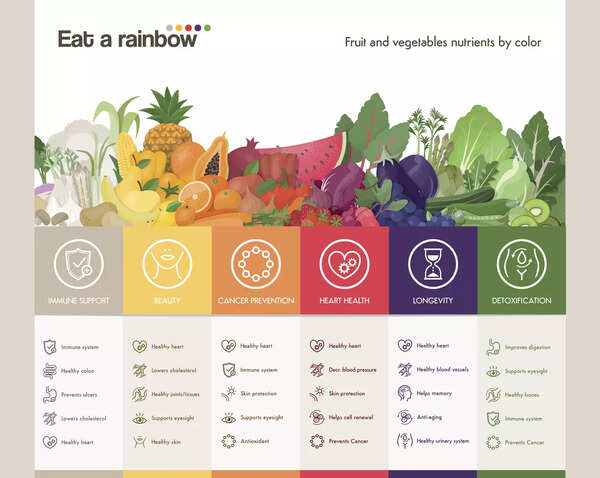- News
- lifestyle
- health-fitness
- diet
- Rainbow diet: Here's everything you need to know
Trending
Rainbow diet: Here's everything you need to know
The rainbow diet encourages consuming a variety of colorful fruits and vegetables to maximize nutrient intake. The Rainbow Diet isn’t just a fun way to eat—it's a powerful tool for improving your overall health. By adding a splash of color to your plate, you’re nourishing your body with a wide array of essential nutrients that work together to keep you feeling your best.

Ever heard the saying, “Eat the rainbow”? It’s not just a catchy phrase—it’s the foundation of a rainbow diet, a fun and colourful approach to eating that’s full of nutritional benefits. Imagine your plate filled with reds, greens, yellows, purples, and oranges—all working together to boost your health. Here is all you need to know about the rainbow diet and why it’s worth trying!
What is the rainbow Diet?


Why is the rainbow diet beneficial?
- Each colour group of foods offers different essential nutrients. Eating a variety ensures you're covering all your nutritional bases.
- Brightly coloured fruits and vegetables are loaded with antioxidants, which fight off free radicals and help prevent disease.
- Many colourful fruits and veggies are high in fibre, supporting digestion and promoting a
healthy gut . - These foods are typically low in calories but high in nutrients, making them ideal for anyone looking to manage their weight without compromising nutrition.
- Regular consumption of
colourful foods can lower the risk of chronic diseases such as heart disease, diabetes, and certain cancers.

Here’s how you can start eating the rainbow every day:
- Try to have at least three different colours on your plate for every meal. For example, pair green leafy vegetables with red bell peppers and yellow squash.
- Swap out processed snacks for colourful alternatives like mixed berries, sliced cucumbers, or baby carrots.
- Blend a variety of fruits and vegetables into your morning smoothie—think spinach, blueberries, and mango.
- Challenge yourself to cook new, colourful dishes. Try stir-fries, salads, or soups that incorporate multiple colour groups.
- Seasonal produce is often more nutrient-dense, so make it a habit to shop for fruits and vegetables that are in season to ensure variety and freshness.
Everything you need to know about a no-sugar diet
Is the rainbow diet sustainable?
Of course! The inclusivity of the rainbow diet is one of its greatest features. It is easily customizable to fit each one's tastes and way of life. It's also a fantastic method to increase the intake of foods high in nutrients without feeling confined or needing to stick to a strict diet. Consuming a range of colours keeps things interesting and reduces boredom.
End of Article
FOLLOW US ON SOCIAL MEDIA










